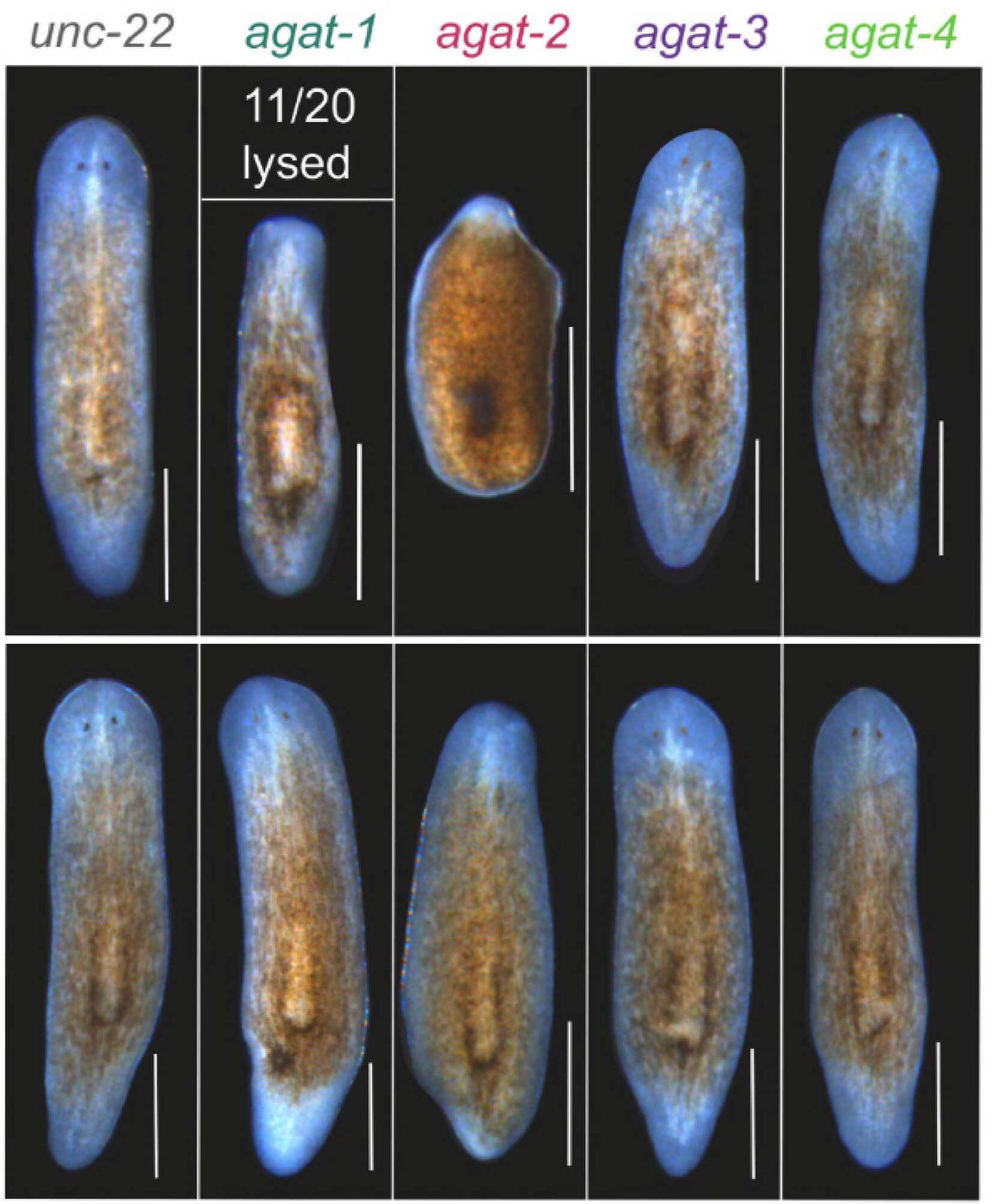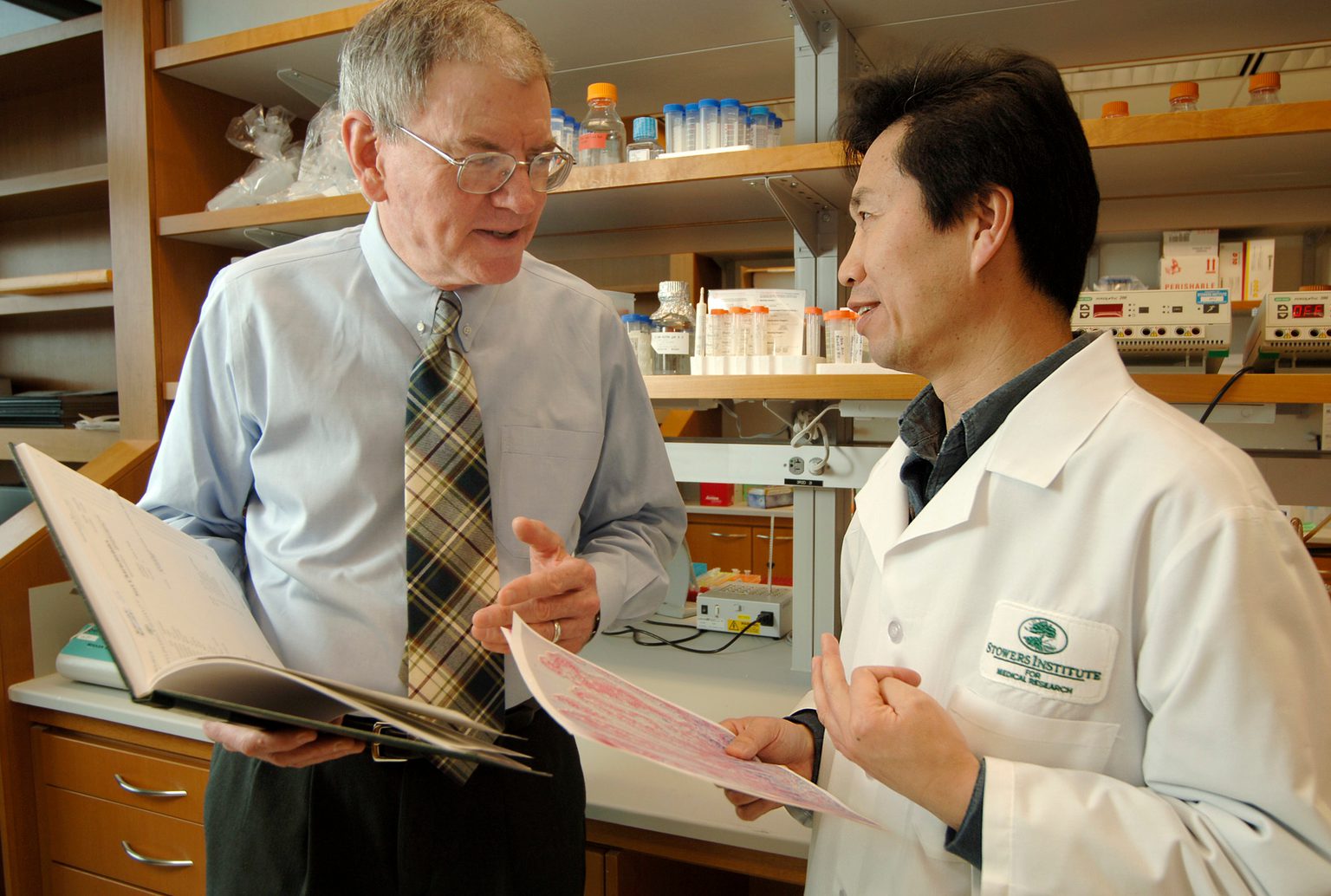By Bob Inderman
Some 18 years ago, Stowers Scientific Director Robb Krumlauf, PhD, placed a call to friends in Dallas seeking personal insight on a scientist about to take the reins of the fledgling Stowers Institute.
There was much to love about this Texan, they told Krumlauf. William (Bill) Neaves, PhD, was instrumental in building biomedical sciences at the University of Texas Southwestern Medical School, recruited stellar leaders of research programs, and held everyone to rigorous scientific and ethical standards. Krumlauf was particularly pleased to hear about Neaves’ total commitment to recruiting and hiring the best scientists.
However, there was a quirk worth knowing.
“They said, ‘the good news is we no longer will have to listen to Bill’s little anecdotal stories. The bad news is that we no longer will be able to listen to those little anecdotal stories,” Krumlauf says. “We have come to know what they meant. And we, too, will truly miss them,” he adds.
Neaves, president emeritus of the Institute, and his wife, Priscilla, decided earlier this year that it was time to retire and return to Texas. During his nearly two decades at the Institute, Neaves oversaw the opening and expansion of its facilities, employee growth from about 50 to about 500 members, and the recruitment of almost two dozen principal investigators.
Stowers President and CEO David Chao, PhD, believes Neaves’ storytelling talent is a singularly effective strategy at persuasion. Each story is personal and always embedded with an important, subtle truth. That proves particularly potent in recruiting talent or to heighten a team’s or individual’s performance.
“His biographical memory is astounding. He can immediately recount an event in his history perfectly pertinent to the discussion at hand,” Chao says. “Bill will lean forward in his Bill Neaves sort of way and draw you in with his congeniality. I love that the stories put people at ease and exude a warmth that encourages you to buy in.”
Neaves’ association with the Institute first began in the late 1990s when he provided formative strategy, organization, and operations guidance to Jim and Virginia Stowers and their advisors. Neaves spent many hours in planning meetings with Dick Brown, who would become the chairman of the board of directors of the Institute; David Welte, who would become the Institute’s executive vice president and general counsel; and advisor Robert Gust from the University of Washington School of Medicine.
As the meetings and discussions progressed, Neaves felt a growing aspiration to serve a larger, more direct role in what was taking shape. He joined the Institute as president in June 2000, and took the title president emeritus in 2010.
“Any startup faces legions of doubters, and the Institute was no exception,” Chao recalls. “Bill was able to present Jim and Virginia’s compelling vision and persuade others to join a grand experiment in American science. That unwavering conviction that the Stowers were serious about science persuaded a rapidly growing number of pioneers to join the Institute.”
Krumlauf believes Neaves’ legacy will be that visionary leadership during those formative months of the startup.
“From the very beginning, he ensured that the Institute was centered on a commitment to excellence and collegiality. This attitude still permeates the Institute today, and I hope it never changes,” he says. “Bill gave us a united focus. In those early years, a frequent refrain you heard when solving problems or setting up infrastructure was, ‘Is this good for science?’”
Virginia Stowers agrees, “Without Bill Neaves, the Institute would not be as successful as it is.”
Neaves remembers “the incredibly dedicated colleagues who worked so diligently to lift the Institute to an unprecedented level of performance in such a short time.”
“Jim and Virginia left us a tremendous gift that must be cherished and energized. We are indebted to them for having the hope and the daring to commit to building the world-class research institute that we are all a part of today,” Neaves says.
Chao adds that “the difference between the Institute at the start and end of Bill’s tenure is remarkable and almost unimaginable. It is no longer considered a grand experiment. It is an exemplary model of smooth operation. We all say, ‘thank you, Bill.’”




